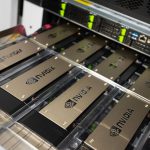Introduction
Artificial Intelligence (AI) and Machine Learning (ML) are transforming industries, from healthcare to finance, automation, and beyond. TensorFlow, an open-source ML framework developed by Google, has emerged as one of the most powerful tools for building AI models. But why should you choose TensorFlow over other frameworks? Let’s dive deep into its benefits, features, and why it stands out in the AI/ML landscape. 🚀
1. What is TensorFlow? 🧠
TensorFlow is an open-source machine learning library developed by Google Brain. It enables developers to build and train deep learning and machine learning models efficiently. TensorFlow supports a variety of ML tasks, including neural networks, natural language processing (NLP), computer vision, and reinforcement learning.
Originally released in 2015, TensorFlow has grown into a versatile framework that supports mobile, web, and cloud-based AI applications.
2. Key Reasons to Use TensorFlow 🏆
1. Scalability & Flexibility 🚀
TensorFlow is designed to handle both small-scale and large-scale ML models. Whether you’re a beginner working on a simple image classifier or a research scientist training complex neural networks with millions of parameters, TensorFlow can scale accordingly.
It supports:
✅ CPUs, GPUs, and TPUs (Tensor Processing Units) for accelerated computations.
✅ Cloud and on-premise deployment, making it suitable for enterprise-level applications.
✅ TensorFlow Serving for seamless deployment of ML models in production.
2. Easy-to-Use APIs & TensorFlow 2.0 Improvements 🛠️
TensorFlow provides high-level APIs, such as Keras, which simplifies deep learning model creation. Some key advantages:
✅ Eager Execution Mode: Runs operations immediately, making debugging easier.
✅ Keras Integration: TensorFlow 2.0 fully integrates Keras, allowing rapid prototyping.
✅ Pythonic Approach: Developers can use Python to design and train models intuitively.
3. Extensive Community & Documentation 📚
TensorFlow is backed by Google and has a vast global community.
✅ Tons of tutorials & guides for beginners.
✅ GitHub repositories with pre-trained models.
✅ Active forums & Stack Overflow discussions to resolve issues.
4. Versatility: From Research to Production 🌎
TensorFlow is widely used in academia, research, and industry. Some use cases include:
📸 Computer Vision – Image recognition, object detection, and facial recognition.
🗣️ Natural Language Processing (NLP) – Chatbots, speech recognition, sentiment analysis.
🎮 Reinforcement Learning – Self-driving cars, robotics, game AI.
📊 Predictive Analytics – Fraud detection, recommendation systems, financial modeling.
5. TensorFlow Lite & TensorFlow.js for Mobile & Web 📱💻
TensorFlow supports mobile and web-based AI applications with:
✅ TensorFlow Lite – Optimized models for Android & iOS devices.
✅ TensorFlow.js – Run ML models directly in web browsers using JavaScript.
6. Pre-Trained Models & Transfer Learning 🔄
TensorFlow provides several pre-trained models via TensorFlow Hub for faster development. These can be fine-tuned for specific applications using transfer learning, reducing training time and computational costs.
7. Built-in Visualization with TensorBoard 📊
TensorBoard allows developers to:
📈 Monitor model training in real-time.
🎨 Visualize neural network architectures.
📊 Track loss, accuracy, and performance metrics.
3. TensorFlow vs. Other ML Frameworks ⚖️
Here’s how TensorFlow compares with other popular ML frameworks:
| Feature | TensorFlow | PyTorch | Scikit-learn | Keras |
|---|---|---|---|---|
| Ease of Use | ✅✅✅ | ✅✅ | ✅✅✅✅ | ✅✅✅✅✅ |
| Scalability | ✅✅✅✅✅ | ✅✅✅ | ✅✅ | ✅✅✅ |
| Production Deployment | ✅✅✅✅✅ | ✅✅ | ✅ | ✅✅✅ |
| Mobile/Edge Support | ✅✅✅✅✅ | ✅✅ | ❌ | ✅✅✅ |
| Visualization (TensorBoard) | ✅✅✅✅✅ | ✅✅✅ | ✅ | ✅✅✅ |
| Community Support | ✅✅✅✅✅ | ✅✅✅✅ | ✅✅✅ | ✅✅✅✅ |
While PyTorch is preferred for research due to its dynamic computation graphs, TensorFlow dominates in production environments because of its robust tools, scalability, and mobile support.
4. Who Uses TensorFlow? 🏢
Many top companies and organizations leverage TensorFlow, including:
🏢 Google – Search algorithms, Google Photos, and Google Assistant.
🛒 Amazon – Product recommendations and Alexa’s AI.
📺 Netflix – Personalized content recommendations.
🚗 Tesla – Self-driving car AI.
💳 Mastercard – Fraud detection and risk analysis.
5. How to Get Started with TensorFlow? 🚀
🔹 Install TensorFlow using pip:
pip install tensorflow
🔹 Create a simple neural network in TensorFlow:
python ------ import tensorflow as tf from tensorflow import keras # Define a simple sequential model model = keras.Sequential([ keras.layers.Dense(128, activation='relu'), keras.layers.Dense(10, activation='softmax') ]) # Compile the model model.compile(optimizer='adam', loss='sparse_categorical_crossentropy', metrics=['accuracy']) # Summary of the model model.summary()
🔹 Explore official tutorials on TensorFlow’s website.
6. Final Thoughts 🏁
TensorFlow remains one of the most powerful AI/ML frameworks available today. Whether you’re a beginner or an advanced data scientist, it offers scalability, flexibility, and ease of deployment. With continuous updates and a strong community, TensorFlow is an essential tool for AI development.


